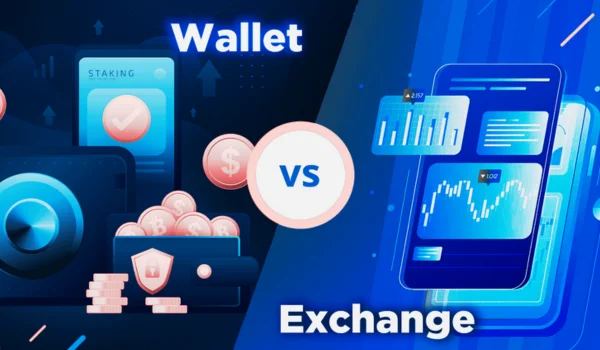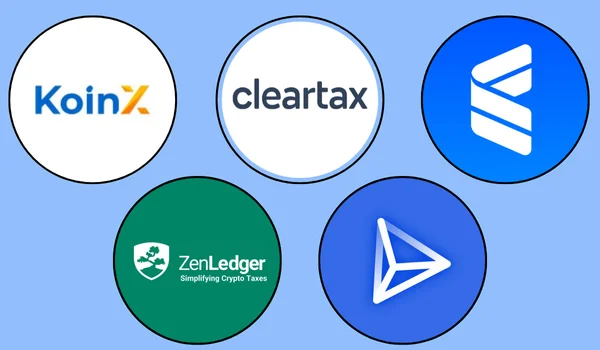The rise of cryptocurrency and blockchain technology in India has introduced a wave of new financial tools and innovations. Among them, crypto wallets are essential for anyone looking to store, trade, or interact with digital assets. But one question that often confuses beginners is:
What’s the difference between a Web3 wallet and an Exchange wallet?
If you’ve started exploring crypto via platforms like WazirX, CoinDCX, or Binance, or if you’re using decentralized apps (DApps) like Uniswap or OpenSea, it’s crucial to understand how these two types of wallets differ — especially in terms of security, control, accessibility, and use case.
This blog will break down the key differences between Web3 wallets and Exchange wallets and guide you on which is better suited for your crypto journey in India.
📌 Quick Summary: Web3 Wallet vs. Exchange Wallet

| Feature | Web3 Wallet | Exchange Wallet |
|---|---|---|
| Ownership | You own the private keys | Exchange owns the private keys |
| Type | Non-custodial (you are in control) | Custodial (exchange holds your assets) |
| Use Case | DeFi, NFTs, staking, DApps | Simple trading, buying/selling crypto |
| Security | Depends on user (can be very secure) | Exchange secures but at central risk |
| Examples | MetaMask, Trust Wallet, Phantom | WazirX, CoinDCX, Binance wallet |
| Access | Requires wallet extensions/mobile apps | Accessible through exchange login |
🔍 What Is a Web3 Wallet?
A Web3 wallet is a non-custodial crypto wallet that allows users to store their crypto assets and interact directly with decentralized applications (DApps) on blockchain networks.
Features of Web3 Wallets:
- You own your private keys, so full control of your crypto.
- Used to connect to DeFi protocols, NFT platforms, and DApps.
- Offers access to multiple blockchains like Ethereum, Polygon, Solana, etc.
- No KYC needed; just generate a wallet and use it.
- Comes as browser extensions (like MetaMask) or mobile apps (like Trust Wallet).
Popular Web3 Wallets:
| Wallet Name | Supported Blockchain(s) | Platform |
|---|---|---|
| MetaMask | Ethereum, Polygon | Chrome, Android, iOS |
| Trust Wallet | Multi-chain (100+) | Android, iOS |
| Phantom | Solana | Chrome, iOS |
| Rabby Wallet | EVM-based chains | Chrome |
🏦 What Is an Exchange Wallet?
An Exchange Wallet is a custodial wallet provided by centralized crypto exchanges. When you buy crypto from platforms like WazirX, CoinDCX, or Binance, your coins are stored in their internal wallet.
Features of Exchange Wallets:
- KYC required as per Indian crypto regulations.
- Exchange holds the private keys — users trust the platform for security.
- Mostly used for buying, selling, spot trading, and margin trading.
- Supports fiat deposits (INR) via UPI, IMPS, NEFT.
Popular Exchange Wallets in India:
| Exchange Name | Regulated by FIU-IND | Wallet Type | INR Support |
|---|---|---|---|
| WazirX | ✅ Yes | Custodial | ✅ Yes |
| CoinDCX | ✅ Yes | Custodial | ✅ Yes |
| ZebPay | ✅ Yes | Custodial | ✅ Yes |
| Binance (global) | ❌ No | Custodial | ❌ INR not directly supported |
🆚 Detailed Comparison – Web3 Wallet vs Exchange Wallet
| Feature | Web3 Wallet | Exchange Wallet |
|---|---|---|
| Control | You own keys and assets | Exchange controls your keys |
| Security | Secure if you manage keys properly | Risk of hacks on exchange servers |
| Backup | Seed phrase backup (manual) | Handled by exchange |
| Accessibility | Requires wallet login + extension/app | Login with email/password + 2FA |
| Ease of Use | Needs basic crypto knowledge | Beginner-friendly |
| Functionality | DApps, DeFi, staking, NFT minting | Buy/sell crypto, convert INR |
| KYC Required | ❌ No | ✅ Yes (as per Indian crypto laws) |
| Offline Use (Cold Storage) | ✅ Possible | ❌ Not available |
| Fiat Integration | ❌ No | ✅ Direct INR deposit/withdrawals |
| Gas Fees | Paid by user | Often covered by exchange (in-house) |
 Which One Should Indian Investors Use?
Which One Should Indian Investors Use?
It depends on your use case and comfort with crypto management.
✅ Use Exchange Wallet if:
- You’re new to crypto and want a simple experience.
- You want to deposit INR via UPI or IMPS.
- You’re not yet using DApps or DeFi protocols.
- You prefer the convenience of centralized support and security.
✅ Use Web3 Wallet if:
- You’re into DeFi, NFTs, staking, or yield farming.
- You want full ownership and privacy.
- You’re using DApps like Uniswap, Aave, OpenSea, PancakeSwap.
- You want more control over how and where your assets are stored.
⚠️ Risks to Keep in Mind
| Wallet Type | Major Risk Factors | Mitigation Tips |
|---|---|---|
| Web3 Wallet | Loss of seed phrase = loss of funds | Write backup on paper, use hardware wallet |
| Exchange Wallet | Exchange hack, insolvency, or fraud | Use only FIU-registered exchanges |
🔐 Pro Tips for Indian Crypto Users
✅ Use Web3 wallet for long-term holding or DeFi projects.
✅ Use exchange wallet for active trading or INR conversion.
✅ Never share your private key or seed phrase with anyone.
✅ Maintain dual wallets – one for trading, one for storing assets securely.
✅ For large holdings, consider hardware wallets (Ledger, Trezor).
📌 Final Thoughts
Understanding the difference between Web3 wallets and exchange wallets is key to becoming a confident and secure crypto investor. In India, with increasing regulations and taxation on crypto, it’s more important than ever to choose the right wallet for the right purpose.
| Use Case | Best Wallet Type |
|---|---|
| Buying crypto with INR | Exchange Wallet |
| Storing long-term crypto | Web3 Wallet (non-custodial) |
| DeFi & NFT activities | Web3 Wallet |
| Active spot trading | Exchange Wallet |
Whether you are a student investor, working professional, or retiree exploring digital assets, wallet choice will significantly affect your crypto journey. So, choose wisely — and always stay informed.
💡 Need help setting up your Web3 wallet or choosing the safest exchange in India? Drop a message and I’ll guide you step-by-step!





